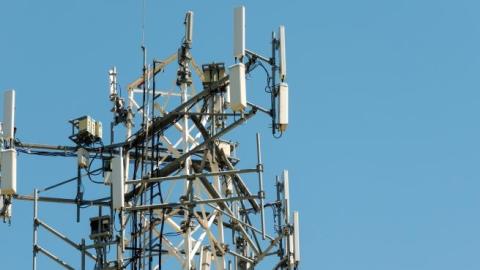Congressional hearings this week will take up the need for more wireless spectrum—the invisible radio frequencies that transmit information to and from mobile devices. Auctioning government spectrum to fulfill this need would not only provide significant revenue for the Treasury; it would also greatly benefit data-hungry American consumers. And because these auctions take years to prepare and implement, now is the time to begin the work.
The U.S. leads the world in the deployment of 4G wireless technologies, and this country has the world’s most efficient networks. Private investment in mobile infrastructure—nearly $32 billion last year—is more than 50% higher than in Europe, and investment is up more than 60% since 2009. But as the great majority of consumers upgrade to smartphones, tablets, wearables and other connected devices, including the budding “Internet of things,” the demand for more spectrum, or bandwidth, is on a rapid pace to exceed supply.
Mobile data traffic in the U.S. will grow sevenfold between 2014 and 2019, according to CTIA, the wireless industry association. During the same period the number of wearable and connected devices in the U.S. will double.
Congress has helped keep up with consumer demand by mandating the auction of government-controlled spectrum to commercial providers. The most recent auction—in the works since 2009—concluded in March, and reaped a record $45 billion for the U.S. Treasury. Next year the Federal Communications Commission will conduct its auction of TV spectrum. After that, no further sales are planned because no additional spectrum has been identified by Congress.
According to industry and FCC studies, the federal government still has sole or primary use of almost 70% of the spectrum best suited for broadband technologies. Congress needs to transfer some of that spectrum from federal to commercial use. That requires a comprehensive plan, which is crucial for maintaining the country’s momentum in wireless networks, devices and apps. Otherwise, investment, innovation, jobs and economic growth will suffer.
Concepts in the Senate’s Wireless Innovation Act or the Wi-Fi Innovation Act in the House are a constructive place to begin. Congress can create financial incentives—such as allowing government agencies to share in auction proceeds—to encourage agencies like the Pentagon or the Transportation Department to relinquish spectrum that they aren’t efficiently using. But if the agencies balk, Congress should make them give it up.
Congress should also consider spectrum sharing. The FCC proposed an idea, endorsed last year by the White House panel of science and technology advisers, to use database technology that would enable the sharing of radio frequencies among commercial broadband, military and other government systems. Spectrum sharing would benefit the armed services, helping to reduce the growing gap between communications technologies available to consumers and those available to our troops. It might also reduce Pentagon equipment costs.
Unlicensed spectrum, for which government permission isn’t required for consumers to use, is another opportunity. This spectrum, currently used for technologies such as Wi-Fi and Bluetooth, can continue to be a powerful platform for innovation, and the government needs to ensure that there is sufficient spectrum for both licensed and unlicensed use. Freeing up additional spectrum for unlicensed use would not directly produce revenue for the Treasury. But unlicensed spectrum has indirect economic benefits through investment, job creation and the launch and growth of U.S.-based companies, including businesses connecting home appliances and lifesaving devices to the Internet.
Bringing federal spectrum to market and raising revenue for the government need not be politically divisive. We served together on the FCC, a Democrat and a Republican, yet we worked side-by-side on creative ways to put the power of spectrum into the hands of entrepreneurs and consumers. Reaching bipartisan consensus is achievable again, because the abundance it produces resolves so many concerns and challenges.
Historically, it takes the better part of a decade to identify the spectrum that needs to be transferred or freed up, set the auction rules and band plans (“zoning” of spectrum), organize the bidders, enable the building of towers and other infrastructure and, ultimately, light up new networks to serve consumers. Deloitte has projected that more than 750,000 new jobs could be created by deploying more mobile broadband. Though Congress has many other issues to handle, it can still advance a pro-growth spectrum policy this year to ensure America’s emerging Internet-of-things economy doesn’t stall.
If we fail to adopt a plan to transfer federal spectrum to private users, policy makers may inadvertently undermine U.S. competitiveness and job creation. Keeping discussions bipartisan and focused on solving problems through investment, innovation, job growth and new revenue for the Treasury will best ensure that new technologies pioneered in the U.S. are first enjoyed by U.S. consumers.

















